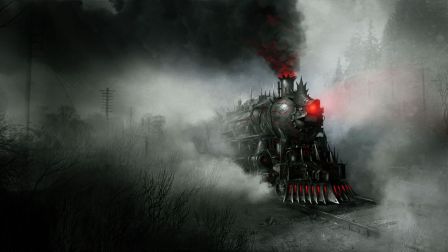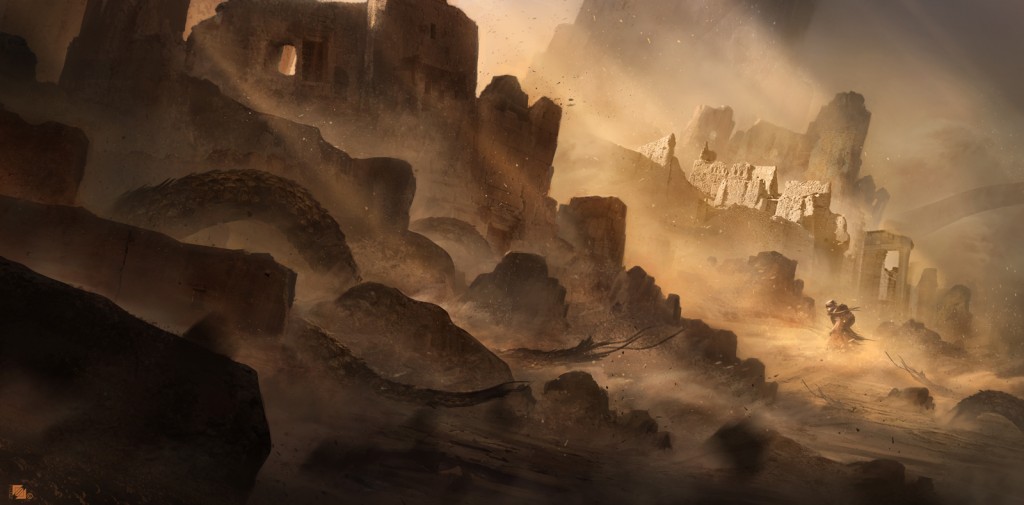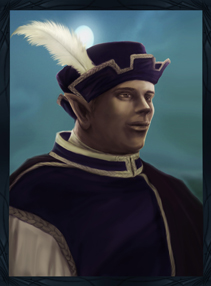There’s a great deal of debate across social media networks about what type of campaign is best to play in the table-top RPG world. Some gamers prefer a very linear game, where the Game Master leads them from one event to another. Others desire a much more versatile game, driven by the whims of the players, with unlimited possibilities. There are advantages and disadvantages to each campaign style, both for the players and the Game Masters running them, as well as certain tips and tricks that can be used to spur the game forward when there is a lull in the action.
Linear Games
While some refer to these types of campaigns as railroads, they don’t have to be a bad thing. Some groups enjoy sticking with a single, epic plotline from start to finish. There may be some side quests, but even they relate in some way to the established storyline. A published adventure path is an example of a relatively linear campaign.
For players, this allows them to manage their characters and their game to a very specific set of circumstances. If the campaign is centered around a search for a powerful necromancer overlord that sends wight assassins, ghoul hunting parties and legions of skeletons and zombies to harass the party, it’s easy to imagine that the group will equip themselves to deal with undead. Truthfully, this is exactly what some groups of players want. On the flip side, they lose out on the variety of possibilities that could occur outside of that central plotline. Perhaps the fighter’s sister has been taken captive by a baron that has no connection to the undead, holding her for ransom. Rescuing her would not only provide for a great roleplaying opportunity, but might yield some anti-undead item or equipment that could be used.
Game Masters, on the other hand, have a pretty easy time with more linear games. Whether they use published modules or write their own encounters and experiences, there is less development necessary for a more linear game than one of a larger scope. Generally speaking, the GM needs an introduction, a series of encounters and/or adventures, and transitions between them. Don’t get me wrong, it’s possible to spend countless hours developing these things, spending more time on it than some Game Masters do for a sandbox campaign; but the scope is significantly smaller in most cases.
If the game begins to stall or players get distracted, the GM need only threaten the party once again with the main villain (or his minions… GO MINIONS!) to help get them back on track. They can also create what are affectionately referred to as “AHA!” moments when different events start to come together, and inspire the group to take the next step in their journey towards the Big Bad Evil Guy.
Sandbox Games
Sandbox games tend to be much less directed, and much wider in scope. They lean heavily on player driven adventures and situations, rather than a step by step progression planned by the Game Master. Campaigns of this sort are also prone to many branches off of the central story, to the point that some of them may not exactly HAVE a central storyline!
Players that enjoy this type of game tend to be exceedingly creative, and think out of the box. They want to go start their own kingdoms, take over the thieves’ guild and run it themselves, or steal entire mithril mines out from under the noses of a wealthy clan of duergar who owned it… Yes, we actually did this once.
As versatile as a sandbox game can be, it isn’t easy for either the players or the Game Master. Players have to set their own goals, and figure out how they want to accomplish them. The wizard wants to create a lightning cloak? Time to determine what you’ll need to do it (beyond time and gold, which I’ve always found to be a bit monotonous) then the GM has to set up the scenario where they can hunt down the required components. Does the party want to clear out an ancient, ruined city? They’ll have to find one and figure out how to clear it out and manage it.
The biggest difference between sandbox games and linear games is that the primary objective can change, sometimes several times, at a moment’s notice. Anyone who has been a GM knows that the whim of the PCs can thwart even the best laid plans, but a completely sandbox-style game does so by definition. On the upside, while a great deal more preparation may need to be done to cover the vast array of possibilities, the story tends to weave in a dozen different plot threads into a gorgeous tapestry of adventure! We’re going to be talking about one such campaign in the lost ruin of Avinsteil, located in the Realms of Twilight campaign setting later on this month.
Sandbox games are at once easier and more difficult to spur on once the group gets distracted by something shiny (like the hoard of a nearby dragon). Introducing a challenge or adventure can do the trick, so long as it can be tied into what’s going on in the game already. Otherwise, it helps to create a list of what goals the players have, and weave an encounter or two into the current scenario that builds on those goals. If executed right, either of these techniques can refocus the group and get them adventuring away once again! (or ruling the world, attracting students… robbing people blind at sword point… the usual things player characters do).
Which is better?
Players argue about this question in almost every RPG themed Facebook group at some point, but the truth is, there isn’t any one answer that suits every playstyle, or every group of players. Most groups enjoy a campaign that is somewhat of a mix between the two, with GM guided quests and smaller objectives, leading the party towards much larger goals they have set for themselves. Does that make any one group wrong? Not remotely, since the point of the Pathfinder Roleplaying Game, Dungeons & Dragons, Firefly, and so many other great RPGs is to enjoy the game.
Both of these campaign types can be truly epic, even leading to similar resolutions! But, as in so many things, it’s not necessarily the destination of an adventure that’s important. It’s the experience points (and gold) gained along the way.
But obviously, there’s more than one opinion in the world, so let’s hear what works best for you and your adventuring cohorts!



